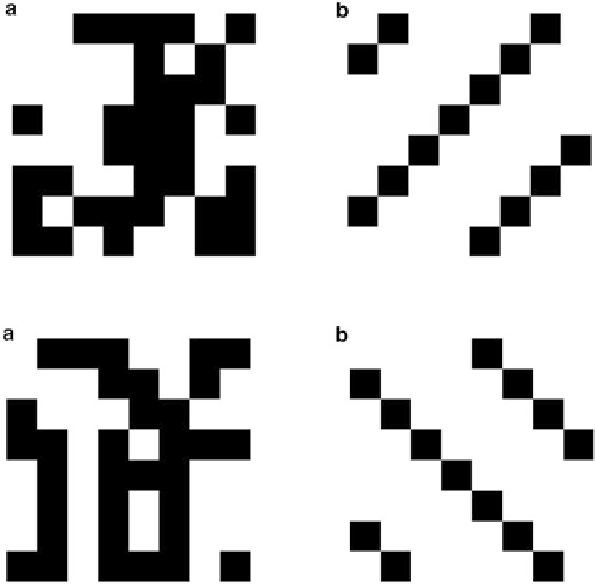Information Technology Reference
In-Depth Information
Fig. 10.9
Eigenspace of matrix W
i
(
a
) Rotated pattern 1 (
b
) Retrieved pattern 1
Fig. 10.10
Eigenspace of matrix W
i
(
a
) Rotated pattern 2 (
b
) Retrieved pattern 2
10.4
Conclusions
Neural associative memories have been considered in which the elements of the
weight matrix were taken to be stochastic variables. The probability density function
of each weight was given by the solution of Schrödinger's equation under harmonic
potential (quantum harmonic oscillator). Weights that follow the QHO model give
to associative memories significant properties: (a) the learning of the stochastic
weights is a Wiener process, (b) the update of weights can be described by
unitary operators as the principles of quantum mechanics predict, (c) the number of
attractors increases exponentially comparing to conventional associative memories.
The above theoretical findings were further analyzed through simulation tests. The
convergence of the QHO-driven weights to an equilibrium was observed and the
existence of non-observable attractors in QHO-based associative memories was
demonstrated.

